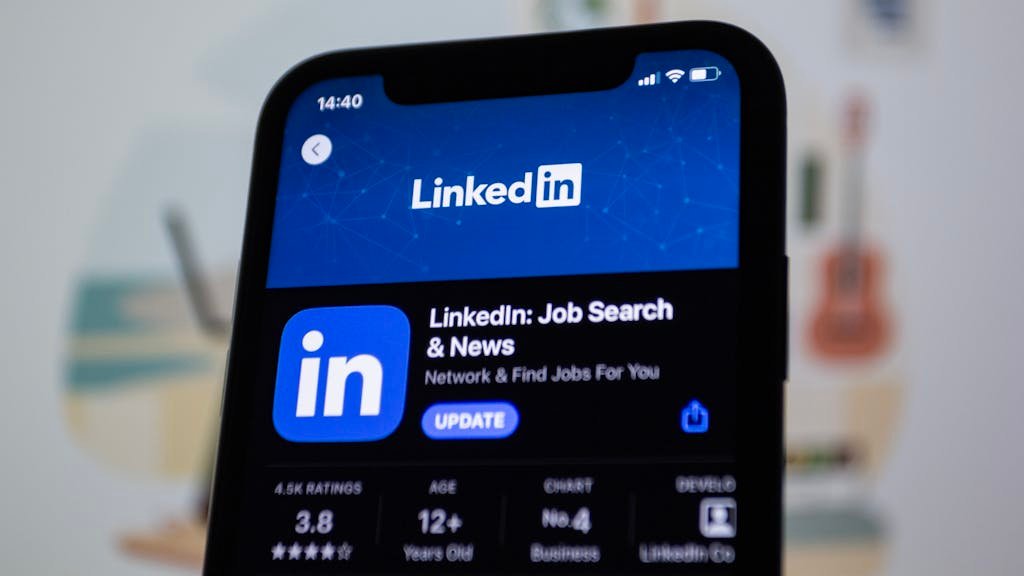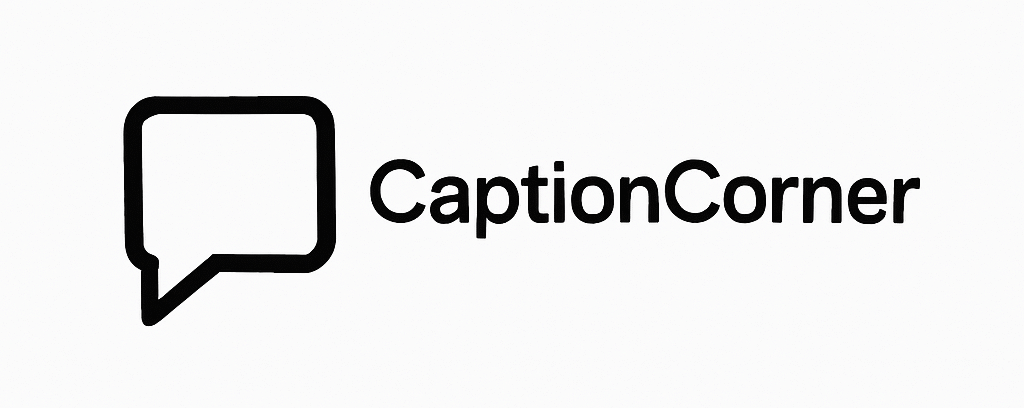How to Write LinkedIn Posts That Drive Inbounds


Understanding the Importance of LinkedIn for Inbounds
LinkedIn has increasingly become a pivotal platform for professionals and businesses looking to establish connections and generate inbound opportunities. With over 900 million members worldwide, it provides an expansive network where decision-makers, industry leaders, and potential clients converge. This unique environment allows businesses to leverage their expertise through effective content, leading to significant networking and partnership opportunities.
When individuals and organizations publish insightful posts on LinkedIn, they position themselves as thought leaders in their respective fields. This can attract inquiries from interested parties seeking collaboration, advice, or services, thereby creating inbound leads. In fact, according to a study by HubSpot, companies that regularly post on LinkedIn experience a 2-3 times higher conversion rate compared to those that do not engage with the platform. Such statistics underscore LinkedIn’s capability to drive inbound marketing strategies.
An effective LinkedIn strategy not only involves sharing posts but also engaging actively with comments and messages. When businesses respond to inquiries or join discussions, they build relationships that can lead to long-term client engagement. Furthermore, companies can utilize LinkedIn’s targeted advertising features to reach specific demographics, enhancing the chances of attracting potential clients in almost any industry.
Another compelling aspect of LinkedIn is its algorithm, which favors authentic engagement and high-quality content. Posts that receive substantial interaction are more likely to appear on the feeds of wider audiences, further amplifying their reach. A study indicated that posts with images receive 94% more engagement, highlighting the need for visually appealing content combined with valuable insights.
Ultimately, harnessing the full potential of LinkedIn can be transformative for businesses. By consistently producing and sharing relevant content, organizations can create a steady stream of inbound opportunities, fostering networking, attracting partnerships, and enhancing client engagement.
Identifying Your Target Audience
Understanding your target audience on LinkedIn is paramount for crafting posts that resonate and drive engagement. The audience on LinkedIn is often diverse, comprising professionals from various sectors, and it is crucial to define who you want to reach. Start by outlining the characteristics of your ideal audience, which may include their industry, job roles, experience levels, and geographical locations. By doing so, you can tailor your content to meet their specific interests and professional needs.
Next, analyze the pain points and challenges your target audience faces within their respective fields. Engaging with your audience’s difficulties can lead to the development of valuable content that offers solutions, insights, or even fosters discussions. Utilize LinkedIn polls or direct messaging to gather feedback and engage in conversations that reveal their needs and preferences. This engagement can provide deeper insights into what type of content will be most effective.
Moreover, making effective use of LinkedIn’s analytics tools is essential for understanding audience behaviors. By evaluating metrics such as post reach, engagement rates, and demographics, you can identify patterns that help refine your content strategy. Pay attention to what content types yield the highest engagement—whether articles, short posts, or visual content. Consider segmenting your audience further based on their interactions with previous posts to tailor your messaging and improve its relevance.
In conclusion, knowing your target audience on LinkedIn equips you with the insights necessary to create compelling posts. By deeply understanding their interests, challenges, and professional needs, you can enhance your connections and drive inbound opportunities effectively. A strategic approach rooted in audience analysis will not only amplify your posts’ reach but also establish your authority in your field.
Crafting Engaging Headlines and Hooks
In the crowded space of LinkedIn, where professionals are vying for attention, crafting engaging headlines and hooks is essential for driving inbound engagement. A captivating headline serves as the first point of contact, enticing users to click and read further. Such attention-grabbing elements should incorporate power words that evoke emotion or curiosity, effectively drawing readers in.
One effective strategy is to begin with power words that convey urgency or importance. Terms such as “essential,” “transformative,” or “ultimate” can heighten the perceived value of your content. For example, a headline like “The Ultimate Guide to Networking on LinkedIn” not only promises a comprehensive resource but also signifies that the information provided is indispensable. Furthermore, employing numbers can make posts seemingly more digestible and focused, as exemplified in headlines like “5 Proven Techniques to Boost Your LinkedIn Profile.”
Posing a question in your headline can also effectively engage the audience’s curiosity. For instance, a headline such as “Are You Making These Common LinkedIn Mistakes?” invites readers to ponder their own practices, which can lead to increased clicks and interaction. It encourages the audience to reflect personally on the subject matter, making them more likely to engage with your content.
Additionally, creating a sense of curiosity can significantly enhance engagement rates. A headline like “What Top Influencers Know About LinkedIn That You Don’t” teases exclusive insights, compelling users to click to uncover this valuable information. By integrating these techniques into your posts, you can effectively elevate your content’s visibility and interaction levels on LinkedIn, fostering greater engagement from your network.
Writing Valuable and Authentic Content
In today’s fast-paced digital landscape, creating valuable and authentic content is essential for engaging your audience on LinkedIn. A well-crafted post can not only facilitate connections but also drive inbound inquiries, making it crucial to focus on authenticity and relevance. Sharing personal experiences, insights, and expertise can resonate deeply with your network, creating a sense of relatability that fosters discussions.
When writing your LinkedIn posts, consider the stories that have shaped your professional journey. Authentic storytelling allows readers to connect with you on a personal level, which can inspire them to reach out. Instead of simply recounting achievements or milestones, delve into the challenges faced and lessons learned. For instance, discussing a project that did not go as planned can provide valuable insights to your audience. Highlighting how you navigated difficulties can spark conversations and portray you as a thought leader in your field.
Moreover, consider sharing insights that may help your audience navigate their strategic decisions. For example, detailing a marketing strategy that led to unexpected business growth can attract engagement from professionals seeking knowledge in that area. Such valuable content is not merely about sharing successes; it encompasses vulnerability and transparency that encourage readers to interact with your posts. Illustrative examples of valuable content often include practical tips, industry trends, or personal anecdotes that invite your audience to reflect and respond.
Finally, remember that engagement is a two-way street. Encourage your readers to comment on your posts by asking open-ended questions or soliciting their thoughts on the subject matter. This type of content can transform your LinkedIn presence into a vibrant discussion hub that drives inbound inquiries, ultimately making your professional profile more attractive and accessible to connections and opportunities.
Utilizing Visuals to Enhance Engagement
Visuals play a critical role in enhancing engagement on LinkedIn. With competition for audience attention intensifying, integrating images, infographics, and videos into your posts can significantly elevate their effectiveness. Visual content not only captures the eye but also makes information easier to digest, increasing the likelihood that your audience will interact with and share your posts.
One of the primary benefits of using images in LinkedIn posts is their ability to evoke emotional responses. Appropriate visuals can create a connection with viewers, appealing to their emotions and encouraging them to engage with the content. Interestingly, posts that include images typically garner more likes, shares, and comments compared to those without visuals, highlighting the importance of incorporating relevant graphics.
Infographics are another powerful tool for enhancing engagement. They combine visuals and data, making complex information more accessible and engaging. When creating an infographic, focus on clarity and coherence. Aim to tell a story visually while ensuring that the visuals complement the textual content. This integration not only aids in retaining reader attention but also reinforces the message you want to convey.
Videos have emerged as one of the most effective mediums for engagement on LinkedIn. They allow for dynamic storytelling, enabling you to present information in a relatable and compelling manner. Short, informative videos that address specific problems or offer solutions can significantly increase viewer retention. Moreover, LinkedIn’s algorithm tends to favor video content, making it even more advantageous for increasing your post’s reach.
To ensure that your visuals align with your written content, consider your target audience and the objectives of your post. Use high-quality, relevant images or videos that reinforce your key points. When selecting or creating visuals, keep in mind the overall design and branding, as consistency across your content can help to strengthen your professional identity on the platform.
Incorporating Calls to Action (CTAs)
Capturing the attention of your LinkedIn audience is important; however, it is equally crucial to guide them towards taking specific actions through well-crafted Calls to Action (CTAs). These elements serve as a bridge between engaging content and meaningful interaction, and their inclusion can significantly enhance the effectiveness of your posts. A clear and compelling CTA directs readers on how to proceed after consuming your content, whether that involves commenting, sharing, or reaching out directly.
Effective CTAs are characterized by their clarity, urgency, and relevance. For example, using phrases like “comment below with your thoughts” invites readers to engage in dialogue, fostering a community atmosphere. Additionally, asking questions such as, “What has been your experience with this topic?” helps to elicit personal responses, which can subsequently increase interaction levels. Furthermore, employing language that conveys urgency, such as “Don’t miss out—join the discussion today!” encourages immediate action, prompting followers to engage right away.
Moreover, incorporating CTAs that promote sharing can expand your post’s reach. For instance, suggesting, “Share this post with your network if you found it helpful,” not only encourages engagement but also amplifies your visibility. Alternatively, a CTA that involves direct inquiries, such as “Message me for more personalized advice,” creates a pathway for private discussions, potentially leading to deeper connections and business opportunities.
Incorporating calls to action seamlessly into your LinkedIn posts can significantly improve how you connect with your audience. The strategic use of CTAs not only fosters engagement but also drives valuable conversations, enhancing your presence on the platform. By guiding your audiences with thoughtful and actionable prompts, you can transform passive readers into active contributors, nurturing a vibrant professional community.
Engaging with Your Audience After Posting
Once a LinkedIn post has been published, the next crucial step is engaging with the audience to foster relationships and encourage ongoing interaction. Engagement is not merely a post-publication task but a vital part of sustaining a lively community around your content. The first step in this engagement process is to actively respond to comments left by your connections and followers. Acknowledging their remarks not only validates their input but also opens up avenues for deeper discussions. Prompt responses exhibit your willingness to connect and can enhance the likelihood of future interactions.
Furthermore, initiating conversations in the comment section can significantly enrich the dialogue around your post. Posing follow-up questions or encouraging users to share their thoughts can create a more dynamic exchange. For example, if a comment addresses a point you made, consider inviting further insights on that topic. This can transform a simple comment thread into an engaging discussion that attracts more viewers, thereby amplifying the reach of your original post. After all, one of the primary functions of LinkedIn is professional networking, and fostering relationships through conversation is fundamental to that goal.
Additionally, the feedback gathered from audience engagement can be invaluable for shaping future content. By noticing which topics spark interest and which generate minimal interaction, authors can tailor their next posts accordingly. This practice not only aligns future content with audience preferences but also demonstrates that you value their opinions, reinforcing connection and trust. In essence, leveraging the engagement gained from a post is crucial; it serves as a springboard for future discussions and content creation. Thus, by making a conscientious effort to engage with your audience, you can cultivate a robust community that is more likely to drive inbound interest over time.
Analyzing Post Performance and Iterating Strategies
To maximize the impact of LinkedIn posts, it is crucial to implement a systematic approach to measuring post performance. Various analytics tools, readily available on the LinkedIn platform, allow users to assess the effectiveness of their content. By utilizing these resources, businesses and individuals can gain valuable insights into how their posts resonate with their target audience.
The primary metrics to track include likes, comments, shares, and direct messages. Likes serve as a fundamental indicator of initial engagement and acceptance of your content. Comments provide deeper insights into audience sentiments and the potential to encourage dialogue. Shares, on the other hand, can amplify the reach of the post, demonstrating the content’s value and relevance to the broader network. Lastly, the volume of direct messages received following a post can signal a more significant interest in the subject matter or the need for further discussion.
In addition to these metrics, it is essential to analyze them in conjunction with the post’s reach and impressions. By doing so, you can contextualize engagement figures, thereby determining whether high likes but low comments, for instance, indicate an insufficient connection with the audience. Tracking these metrics over time allows for a comprehensive understanding of what contributes to successful LinkedIn posts.
Drawing actionable insights from this analytical process will enable content creators to refine their strategies. Adjusting future posts based on past performance can enhance engagement. This might involve experimenting with different content formats, such as videos or infographics, modifying posting times, or varying the tones and styles used in the posts. Ultimately, iterating on these strategies based on measurable results leads to more effective LinkedIn engagements, fostering stronger connections and driving higher inbound interest.
Scheduling and Consistency: Keys to a Successful LinkedIn Strategy
In today’s digital landscape, where competition for attention is fierce, developing a successful LinkedIn strategy requires strategic scheduling and consistency in posting. Scheduling LinkedIn posts allows professionals to maximize engagement by determining the optimal times to reach their audience. Understanding peak activity times on LinkedIn leads to increased visibility and interaction from followers, ultimately driving more inbound opportunities. By planning posts ahead of time, individuals can create a content calendar that aligns with their professional goals and target audience interests.
Consistency is a vital component of effective social media engagement. A regular posting schedule fosters trust and reliability, encouraging followers to anticipate and engage with your content. Aiming for a steady rhythm—whether it’s posting daily, weekly, or bi-weekly—will ensure that one’s profile remains active in the LinkedIn ecosystem. The more consistent the content, the more likely it is to resonate with followers and attract new connections, enhancing networking prospects.
To facilitate a smoother process of planning and scheduling, various tools can assist users in automating their LinkedIn posts. Platforms such as Buffer, Hootsuite, and Later allow individuals to prepare multiple posts in advance, enabling them to maintain a steady flow of content without the stress of daily management. These tools not only help in saving time but also allow for better strategic analysis of post performance. By reviewing engagement metrics, professionals can refine their content strategy based on what resonates with their audience most.
Incorporating a consistent posting schedule through proper planning and the use of scheduling tools is essential for fostering sustained engagement on LinkedIn. Adopting these practices will result in a more effective LinkedIn presence, yielding higher levels of interaction and increased inbound opportunities in the professional realm.





